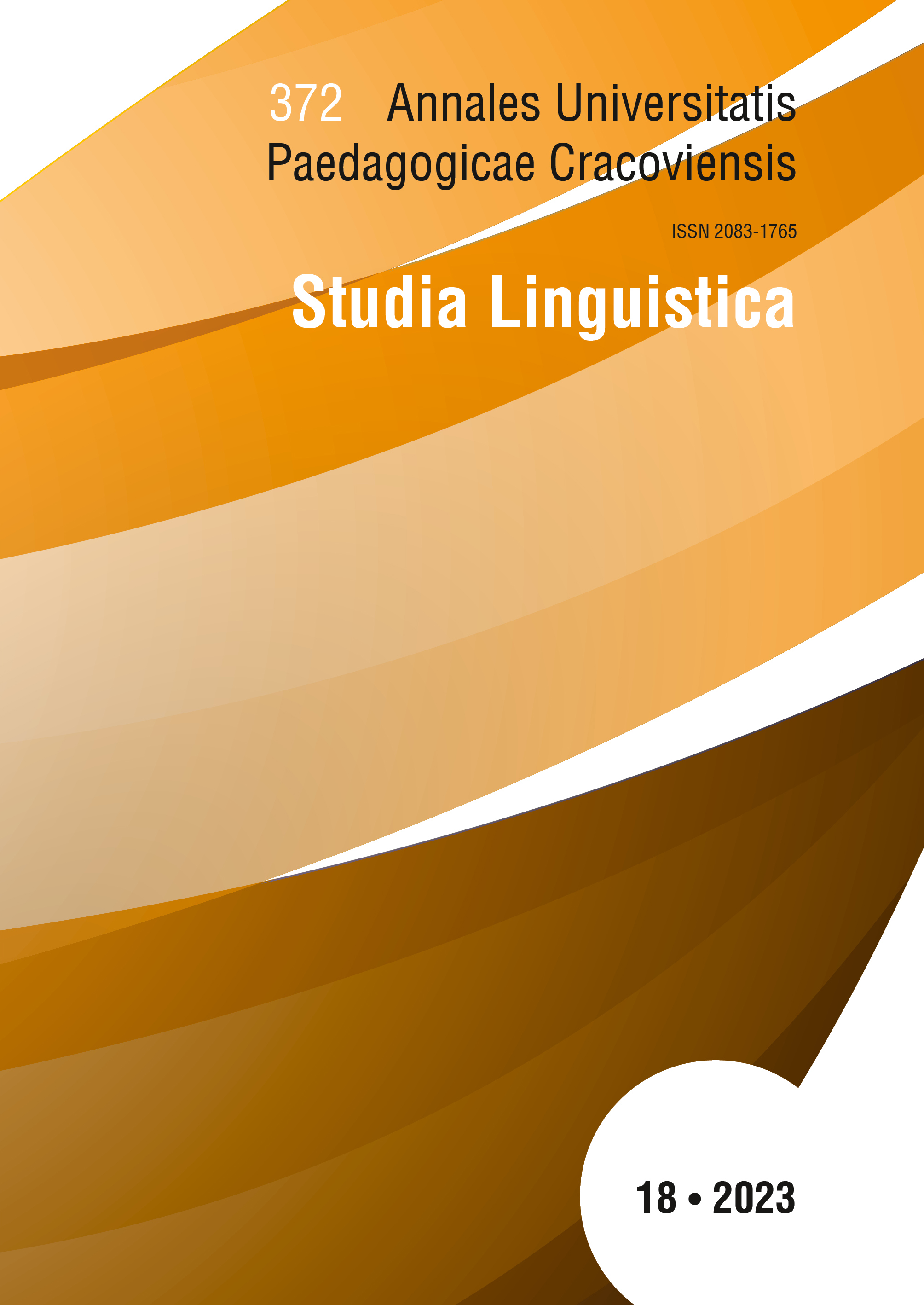Typy zaburzeń językowych w zespole Aspergera
Main Article Content
Abstrakt
For many years, both the DSM‑IV and ICD-10 have built up the misconception that there are no language disorders in Asperger’s syndrome. This has had a significant impact on the problems with the diagnosis of Asperger syndrome, and has been the cause of many misdiagnoses. The current editions: DSM-5 and ICD-11 have not changed the established approach. Many years of research and clinical experience have allowed the author of this article to verify the view of normal speech and communication development in Asperger syndrome. We now know that children with ZA may manifest different types of disorders, concerning both systemic and communicative competence. The author of the article characterises the types of language problems observed in ZA, including: the specificity of early speech development, alalia (delayed speech development), aphasia, comprehension of speech and intonation of speech and indicates their sources and examples. This is of great importance in the context of the correct diagnosis and therapy of children on the autism spectrum, including the differential diagnosis of autism and Asperger syndrome.
Downloads
Article Details

Utwór dostępny jest na licencji Creative Commons Uznanie autorstwa – Użycie niekomercyjne – Bez utworów zależnych 4.0 Międzynarodowe.
Autor, zgłaszając tekst do redakcji czasopisma „Annales Universitatis Paedagogicae Cracoviensis. Studia Linguistica”, zaświadcza, iż jest on rezultatem wyłącznie jego własnej twórczości, że treść artykułu nie była dotychczas publikowana oraz że utwór nie narusza w żadnym stopniu praw autorskich ani praw pokrewnych innych osób, jak również innych praw osób trzecich, a także, że niczyje prawa do utworu (lub jego jakiejkolwiek części) nie zostały pominięte. Po podpisaniu umowy prawa majątkowe do opublikowanych materiałów zostają przeniesione na Wydawnictwo Naukowe Uniwersytetu Komisji Edukacji Narodowej w Krakowie.
Rocznik „Annales Universitatis Paedagogicae Cracoviensis. Studia Linguistica” to czasopismo o otwartym dostępie, a cała jego zawartość jest udostępniana bezpłatnie dla użytkowników i instytucji na zasadach licencji Creative Commons CC-BY-NC-ND 4.0 (uznanie autorstwa, użycie niekomercyjne, bez utworów zależnych). Na podstawie tej licencji autorzy zgadzają się, że ich prace mogą być zgodnie z prawem ponownie wykorzystywane do jakichkolwiek celów, za wyjątkiem celów komercyjnych, bez konieczności uzyskania uprzedniej zgody ze strony autora lub wydawcy. Każdy może prace te czytać, pobierać, kopiować, drukować, rozpowszechniać oraz przetwarzać, pod warunkiem poprawnego oznaczenia autorstwa oraz oryginalnego miejsca publikacji. Publikowanych tekstów nie można wykorzystywać do tworzenia utworów zależnych (np. do tłumaczenia ich i publikowania w innym języku bez zgody wydawcy). Jest to zgodne z definicją otwartego dostępu BOAI (Budapest Open Access Initiative) „Studia Linguistica”nie pobiera opłat za składanie artykułów ani ich przetwarzanie.
Autor, przesyłając artykuł do redakcji „Studia Linguistica”, bezwględnie zgadza się z poniższymi punktami:
-
Oświadczam, że jestem Autorem lub Współautorem nadesłanego tekstu. Przesłany tekst nie był nigdzie publikowany, jest całkowicie oryginalny i nie narusza w żadnym stopniu praw autorskich ani praw pokrewnych innych osób, jak również innych praw osób trzecich, a także, że niczyje prawa do utworu nie zostały pominięte.
-
Oświadczam, że nadesłany tekst nie został złożony do recenzji lub/i publikacji w innym czasopiśmie.
-
Przyjmuję do wiadomości, że Autor ponosi pełną odpowiedzialność za każdy przypadek plagiatu, niezależnie od tego, czy został on wykryty podczas procesu recenzji, czy po publikacji w „Studia Linguistica”.
-
Oświadczam, że ponoszę pełną odpowiedzialność finansową i prawną za wszelkie roszczenia związane z utworem.
-
Potwierdzam uznanie wszystkich źródeł danych wykorzystanych i cytowanych w badaniach.
-
Potwierdzam, że artykuł został wykonany z należytą starannością zgodnie ze standardami edytorskimi „Studia Linguistica”.
Bibliografia
Antas J., 2013, Semantyczność ciała. Gesty jako znaki myślenia, Łódź.
Google Scholar
Bartmiński J., 2006, Językowe podstawy obrazu świata, Lublin.
Google Scholar
Bokus B., Shugar G.W. (red.), 2007, Psychologia języka dziecka, przeł. E. Haman i in., Gdańsk.
Google Scholar
Bishop D.V.M., 2014, Ten Questions about Terminology for Children with Unexplained Language Problems, „International Journal of Language&Communication Disorders”, nr 4, s. 381–415.
Google Scholar
Cieszyńska‑Rożek J., Korendo M., 2018, Metoda krakowska – techniki diagnozy, stymulacji i terapii zaburzeń rozwoju dzieci, [w:] Metody terapii logopedycznej, red. A. Domagała, U. Mirecka, Lublin, s. 91–120.
Google Scholar
Cieszyńska‑Rożek J., Korendo M., 2021, Dymensjonalna diagnoza rozwoju dzieci, Kraków.
Google Scholar
DSM-5 – The Diagnostic and Statistical Manual of Mental Disorders, 2013, red. American Psychiatric Association, wyd. 5, Washington.
Google Scholar
Duffy F., Shankardass A., McAnulty G.B. i in., 2013, The Relationship of Asperger’s Syndrome to Autism. APreliminary EEG Coherence Study, „Current Controversions in Psychiatry”, nr 11, https://doi.org/10.1186/1741-7015-11-175.
Google Scholar
Faridi F., Khosrowabadi R., 2017, Behavioral, Cognitive and Neural Markers of Asperger Syndrome, „Basic and Clinical Neuroscience”, nr 5, s. 349–360, https://doi.org/10.18869/NIRP.BCN.8.5.349.
Google Scholar
Grandin T., Panek R., 2016, Mózg autystyczny. Podróż w głąb niezwykłych umysłów, przeł. K. Mazurek, Kraków.
Google Scholar
Karanth P., 2020, From aphasia and allied disorders to autism spectrum disorders‑A mutualistic symbiotic relationship. (A five decade long journey in neuro‑communication disorders), „Annals of Indian Academy of Neurology” 23 (Suppl 2), s. 63–66.
Google Scholar
Korendo M., 2013, Językowa interpretacja świata w wypowiedziach osób z zespołem Aspergera, Kraków.
Google Scholar
Korendo M., 2022, Diagnoza dymensjonalna zespołu Aspergera, „Poznańskie Studia Polonistyczne, Seria Językoznawcza” 29(49), nr 2, s. 245–257.
Google Scholar
Leonard L.B., 2006, SLI. Specyficzne zaburzenie rozwoju językowego, Gdańsk.
Google Scholar
Maćkiewicz J., 1999, Co to jest „językowy obraz świata”?, „Etnolingwistyka. Problemy Języka i Kultury”, t. 11, s. 7–24.
Google Scholar
Marrison J., 2016, DSM-5 bez tajemnic. Praktyczny przewodnik dla klinicystów, przeł. R. Andruszko, Kraków.
Google Scholar
Paulsen B., Velasco S., Kedaigle A.J. i in., 2022, Autism Genes Converge on Asynchronous Development of Shared Neuron Classes, „Nature”, nr 602, s. 268–273, https://doi.org/10.1038/s41586-021-04358-6.
Google Scholar
Rostowski J., Rostowska T., 2014, Rola systemu lustrzanych neuronów w rozwoju języka i komunikacji interpersonalnej, „Psychologia Rozwojowa”, nr 2, s. 49–65, https://doi.org/10.4467/20843879PR.14.011.2289.
Google Scholar
Tomasello M., 2002, Kulturowe źródła ludzkiego poznawania, przeł. J. Rączaszek, Warszawa.
Google Scholar
Trull T., Durrett Ch., 2005, Categorical and Dimensional Models of Personality Disorder, „Annual Review of Clinical Psychology”, t. 1, s. 355–380, https://doi.org/10.1146/annurev.clinpsy.1.102803.144009.
Google Scholar
